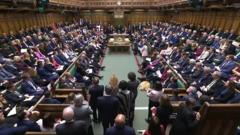Rebel Forces Launch Major Offensive in Aleppo, Syria
In a significant escalation of the long-standing Syrian conflict, rebel forces have launched a major offensive in Aleppo, Syria’s second-largest city, marking the most substantial military action against government forces in years.
The Islamist militant group Hayat Tahrir al-Sham (HTS) and its allied factions initiated the attack on Wednesday, quickly seizing control of multiple towns and villages across Aleppo and Idlib provinces. According to the UK-based Syrian Observatory for Human Rights (SOHR), the rebels began their assault by detonating two car bombs before advancing into urban neighborhoods.
The Syrian government has responded by claiming to have regained control of some positions in the Idlib and Aleppo countryside. However, the SOHR reports that opposition forces have successfully taken control of more than 50 towns and villages since the offensive began.
The conflict has been particularly intense, with Syrian and Russian aircraft conducting 23 air strikes on Aleppo city and its surrounding areas on Friday alone. The human cost has been significant, with the SOHR reporting 255 casualties, predominantly combatants, making this the deadliest confrontation between rebels and pro-government forces in recent years.
This latest outbreak of violence disrupts a period of relative calm that had settled over the region. Following the Syrian civil war that began in 2011, fighting had substantially decreased by 2020 when Turkey and Russia brokered a ceasefire to halt the government’s push to retake Idlib. While sporadic clashes and air strikes continued, the region had experienced an extended lull in large-scale military operations.
Idlib remains the last significant opposition stronghold in Syria, hosting over four million people, many of whom have been displaced during the conflict and are living in extremely challenging conditions. The current offensive threatens to further destabilize this already vulnerable population.
The renewed fighting highlights the ongoing complexity of the Syrian conflict, which has involved multiple domestic and international actors over more than a decade. The involvement of groups like HTS, along with the continued military presence of Syrian government forces, Russian support, and other regional interests, continues to make resolution of the conflict challenging.
As the situation develops, international observers are closely monitoring the potential humanitarian impact and the possibility of further escalation. The offensive represents a significant test of the fragile balance of power in the region and could potentially reshape the dynamics of the long-standing Syrian conflict.
The coming days and weeks will be crucial in determining the extent of the rebel advance and the government’s ability to contain and repel the offensive.




